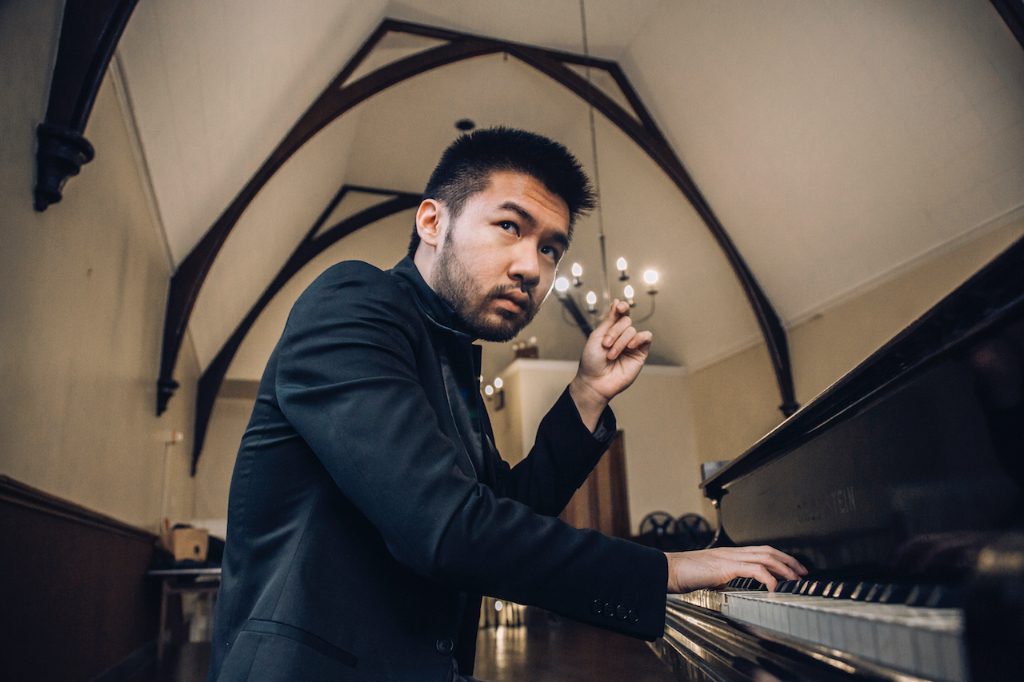Conrad Tao Offers Brilliant Online Piano Recital Courtesy of the Philharmonic Society of Orange County
In 2015, when the 21-year-old pianist Conrad Tao gave an astonishing account of Shostakovich’s First Piano Concerto with the San Diego Symphony, his local debut immediately brought him a slew of invitations from the major local performing arts community. He has returned to the Symphony several times, opened the 2017 Mainly Mozart Festival, and appeared in the 2019 La Jolla SummerFest.

Conrad Tao [photo courtesy of Mainly Mozart]
Quickly shifting to mid-century modernism, Tao offered two contrasting versions of Ruth Crawford Seeger’s concise “Piano Study in Mixed Accents” from 1930 to surround Cuban composer Tania León’s 1987 “Rituál.” As acerbic and unrelenting as any piano music from European avant-garde composers of her time, Crawford Seeger’s steely idiom proved deliciously unrestrained by conventional metrical and harmonic expectation. The bravura tumult in which León’s piece climaxed certainly suggested a primitive, even orgiastic ritual, and Tao’s muscular technique served both composers’ flamboyance well.
For those of more conservative programming expectations, Tao included the slow movement of Mozart’s Piano Sonata in F Major, K. 332, and a transcription of J. S. Bach’s chorale prelude “Wenn wir in höchsten Nöten sein,” BWV 641, from the Orgelbüchlein.
Many pianists seize the opportunity to turn a slow movement from a Mozart sonata into a charming bauble, sheathing the composer’s phrases with the most iridescent timbres a modern concert grand can supply. But Tao decided this Mozart sugar cookie was sweet enough and did not need the added glaze of icing and colored sprinkles. With chastely articulated phrasing and pellucid attacks, he kept the focus on the composer’s ravishing thematic invention rather than the glories of the piano’s timbral spectrum . Concert pianists of the great Romantic tradition have frequently been attracted to J.S. Bach’s lavishly ornamented organ chorale preludes, and Ferruccio Busoni’s frequently programmed transcription of “Nun komm’ der Heilden Heiland” from Bach’s Great 18 Chorales is probably the best known example. Tao’s shorter example of an ornamented Bach chorale prelude “Wenn wir in höchsten Nöten sein, BWV 641,” glowed with the warm emotional intensity he scrupulously avoided in his preceding Mozart offering, brought home with Tao’s elegant touch and discreet application of rubato.
Following the Bach selection, Tao offered his own composition “Grids of E,” disparate, jazzy riffs that quickly gave way to explosive fusillades and aggressive chordal iterations pressed at breakneck speed. If Tao was implying a progression of musical influence by this trio of works—Mozart, Bach, Tao—I think his “Grids of E” suggested the succession of influence would be more like Bach, Busoni, Tao.
Tao completed his salon recital with a transcendent account of Johannes Brahms’ Intermezzo in A Major, Op. 118, No. 2.

Ken Herman, a classically trained pianist and organist, has covered music for the San Diego Union, the Los Angeles Times’ San Diego Edition, and for sandiego.com. He has won numerous awards, including first place for Live Performance and Opera Reviews in the 2017, the 2018, and the 2019 Excellence in Journalism Awards competition held by the San Diego Press Club. A Chicago native, he came to San Diego to pursue a graduate degree and stayed.Read more…
